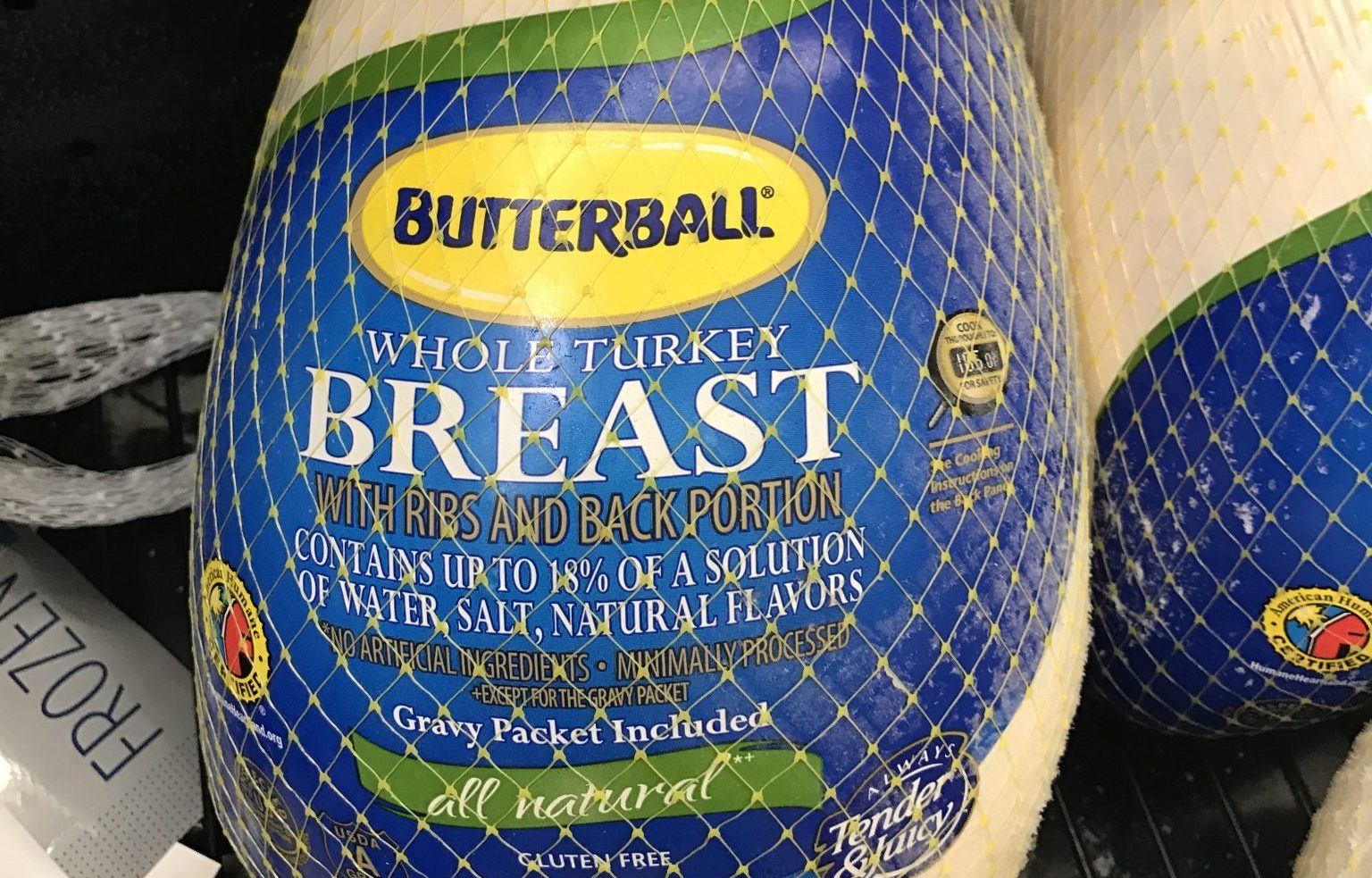Commercial Poultry

Understanding the many labels on raw poultry products can help you choose the right product for you and your family.
Local supermarkets offer consumers more choices than ever. Each time you visit the poultry section of the meat department, you can select the chicken you buy based on how it was raised, what it ate, how it was processed, and whether it was seasoned before purchase. Navigating the available choices and labels can be a real challenge. This guide will help you understand the labels you commonly see.
Conventional, Free Range, Pasture Raised
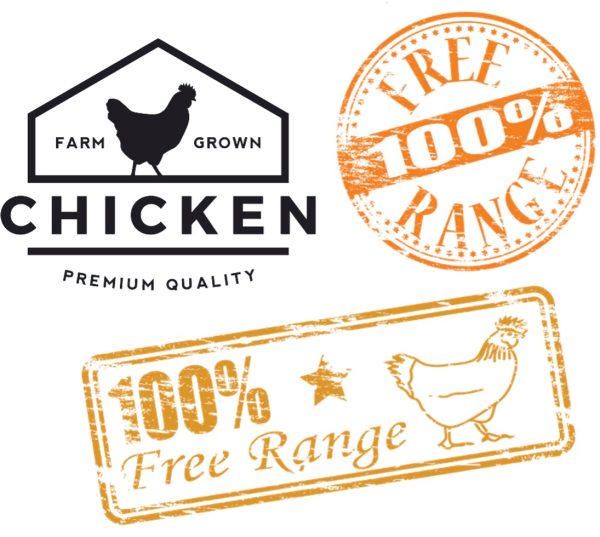 Most broiler chickens in the United States are raised in large, environmentally controlled houses. These birds are described as conventionally raised. Growing broilers inside an enclosed house regulates temperature and prevents outside contamination from wild birds.
Most broiler chickens in the United States are raised in large, environmentally controlled houses. These birds are described as conventionally raised. Growing broilers inside an enclosed house regulates temperature and prevents outside contamination from wild birds.
Other options include free-range and pasture-raised chickens. Free-range chickens are raised in stationary houses and have access to the outdoors. Pasture- raised chickens are raised outdoors with access to a moveable enclosure. “Raised cage-free” is another phrase you might find on a chicken label. Conventional, free-range, and pasture-raised chickens raised for meat are all cage free.
No Added Hormones, No Antibiotics Ever, All Vegetarian, Organic
Chickens are typically fed corn and soybean diets with added fats, vitamins, and minerals. Some product labels will state “no added hormones,” but that is unnecessary. Hormones cannot legally be added to broiler feed or given directly to birds.
Antibiotic-free chickens are those raised without the use of antibiotics. If for some reason antibiotics need to be administered to the flock, those birds will be transferred to a conventional market. However, even if antibiotics are used, by law no antibiotic residues are allowed in any poultry meat.
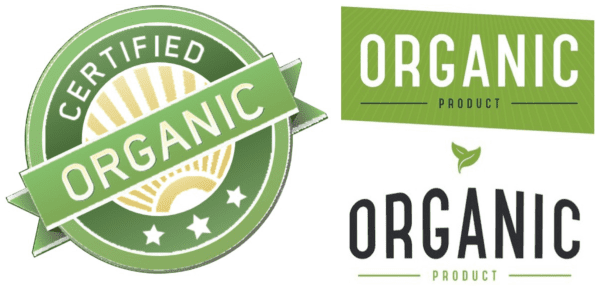 All-vegetarian diets indicate that the chicken feed does not contain any ingredients from meat and poultry products. This labeling claim does not guarantee that the chickens did not eat any nonvegetable items, such as insects, that were present in their environments.
All-vegetarian diets indicate that the chicken feed does not contain any ingredients from meat and poultry products. This labeling claim does not guarantee that the chickens did not eat any nonvegetable items, such as insects, that were present in their environments.
All chicken labeled as organic must comply with United States Department of Agriculture (USDA) federal regulations. From the second day after hatching, birds must be fed and managed using 100 percent organic feed. Access to the outdoors is also required.
Halal, Kosher
Halal-labeled chicken has been slaughtered according to the procedures required under Islamic law. Slaughter must be performed by an adult Muslim invoking the name of Allah.
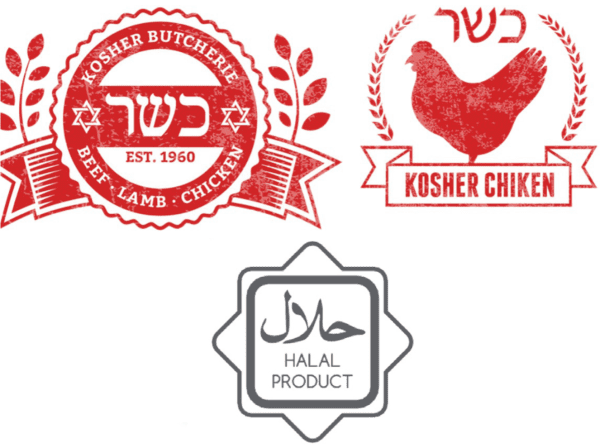 Kosher-labeled chicken has been slaughtered according to Jewish law. Chickens must be slaughtered by a person trained in the rituals of kosher slaughter. After the meat has been slaughtered, it undergoes a process called kashering. Kashering is the salting of meat to remove all remaining blood.
Kosher-labeled chicken has been slaughtered according to Jewish law. Chickens must be slaughtered by a person trained in the rituals of kosher slaughter. After the meat has been slaughtered, it undergoes a process called kashering. Kashering is the salting of meat to remove all remaining blood.
Self-Basting, Natural, Fresh
Self-basting turkeys have been injected with or marinated in a solution of fat, broth, stock, or water with spices, flavor enhancers, or other approved ingredients. The percentage weight that has been added to the product is included on the label. These turkeys do not need to be brined at home before cooking.
The term natural indicates that no artificial ingredients or coloring were added and that the product was minimally processed. Fresh poultry products have never been cooled to below 26 degrees F. Frozen products must be cooled to 0 degrees F or below.
Humane Certifications
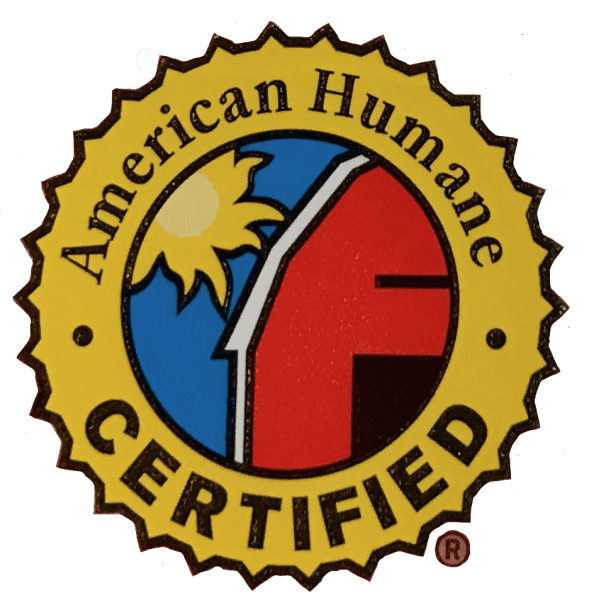 The American Humane Certified label requires that the farm on which the chickens are grown adheres to specific animal welfare standards. Specific standards are included for record keeping, feed and water, environmental specifications, transport to the processing plant, and processing of the chickens.
The American Humane Certified label requires that the farm on which the chickens are grown adheres to specific animal welfare standards. Specific standards are included for record keeping, feed and water, environmental specifications, transport to the processing plant, and processing of the chickens.
The Certified Humane label is similar to the American Humane Certified label but with a few additional requirements. No animal by-products or antibiotics can be added to the feed. Environmental enrichment, such as ramps, low perches, pecking blocks, straw bales, scattering of whole grains, cabbages, cauliflowers, sprouts, broccoli, rounded tubes, or hanging wooden blocks, is also required.
To apply the label of humane certification, the farm on which the animals are raised must be audited to ensure that specific animal husbandry practices are followed. The lack of a humane label does not indicate that the product was not raised humanely. Those farms simply have not undergone the auditing process.
Whether you are looking for free-range organic breast fillets, low-cost conventionally raised meat, or a product to meet your religious requirements, you have many options to choose from. Understanding what those labels mean will help you make the right choice for you and your family.
 Dianna Bourassa, Extension Specialist, Associate Professor, Poultry Science, Auburn University
Dianna Bourassa, Extension Specialist, Associate Professor, Poultry Science, Auburn University
Revised April 2023, Raw Poultry Products: What Do All Those Labels Mean?, ANR-2386

